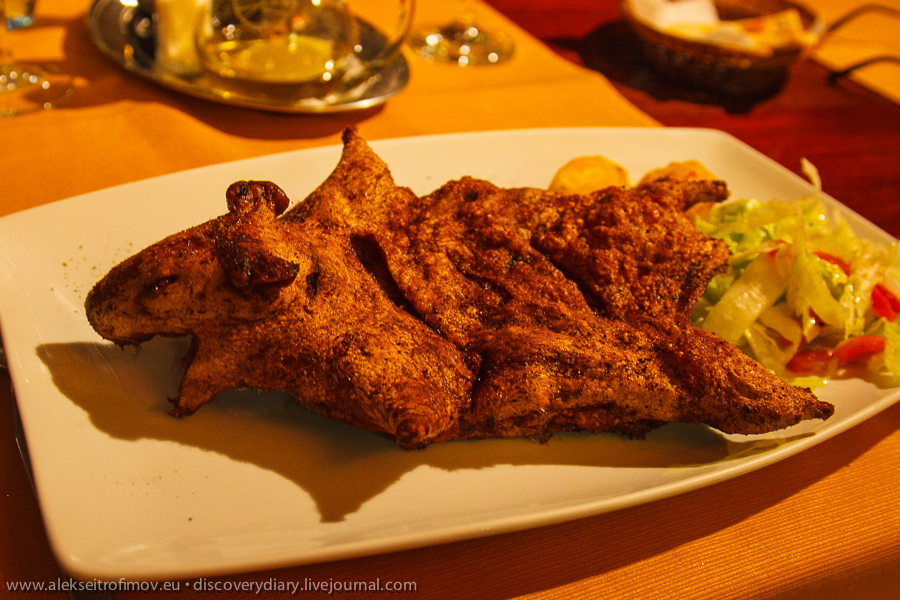What do we normally associate with Peru?
The Inca civilisation and its apotheosis, Machu Picchu.
Nazca lines for archeology lovers.
Politics aficionados may remember the communist rebels of Sendero Luminoso and the President Alberto Fujimori who crushed it.
There is also Lake Titicaca (although half of it is in fact in Bolivia.)
That is probably about it in the popular consciousness.
And yet probably the most bright experience of today’s Peru is altogether different. Peru is the gastronomic eldorado of South America. Its kitchen is considered the best in the continent. In Peru the gastronomic traditions of all kinds of immigrants – from Asia, Europe, Africa – have mixed democratically with the traditions and knowledge of the locals. All of these traditions together with the availability of ingedients from every thinkable climate zone – as Peru possesses jungles, mountains, deserts, ocean, rivers and everything in between – gives rise to unusual, creative dishes.
I promised myself to take a pic of every dish I eat, but have to admit the defeat of this undertaking. Seriously, every time the food came in front of me, the need to picture it got completely forgotten! I tried even to apply some NLP tricks to remember about it, but to no avail.
Still in a couple of cases I managed to make the following pics.
Cuy
Perhaps the most impressive Peruvian dish is cuy, which is roasted guinea pig. I must say I felt some pangs of consciousness before eating it at first. The waiter even asked me if I wanted to get it together with the head on the plate or without. I decided that if I commit the crime already, should go full at it – please bring the head!
Guinea pigs are very quick to reproduce and are easy to prepare, so cuy has become the national dish of the Andes. It is so popular that on the many paintings of the Last Supper by the painters of the Cuscan school cuy regularly appears in front of Jesus, along with corn and yucca. Cuy turned out to be really tasty – very tender pink meat, something between rabbit and quail. The meat also has no cholesterol, so apparently is quite healthy too. I am surprised it is not eaten more widely in other parts of the world.

Continue reading Peruvian food →